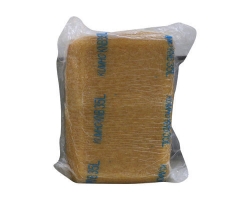Nitrile Butadiene Rubber

Nitrile Butadiene Rubber
This raw material report defines nitrile rubbers as synthetic elastomers in which unsaturated nitriles are copolymerized with dienes, typically butadiene and acrylonitrile. Emulsion polymerization is the dominant manufacturing method, and these rubbers are supplied in both solid and latex forms. Nitrile adhesives are noted for their outstanding oil, heat, and plasticizer resistance; the higher the acrylonitrile content, the higher the resistance to oil and heat. They also provide high shear strength for structural applications.
Note: Price may be negotiable as per order quantity and may vary irrespective of prior notice.
Specification
Rubbers high in acrylonitrile content must be milled, preferably on a cold two-roll rubber mill, prior to compounding into solvent-based adhesives. Milling is necessary in order to render these elastomers solvent soluble. Medium acrylonitrile copolymers, sold as directly soluble nitrile rubbers, are also frequently milled prior to use. In all cases, milling improves solubility, lowers solution viscosity, and improves viscosity stability of the formulated adhesive. Phenolic resins commonly are used as tackifiers to improve specific adhesion and/or as crosslinking agents in nitrile adhesives.
Water borne adhesives compounded with nitrile latices and water soluble or dispersible modifiers and tackifiers, such as casein, phenolic and hydrocarbon resins, find use in various applications. However, the high adhesive strengths generally obtainable with nitrile solvent adhesives cannot be matched by their water borne counterparts. The slower drying rates of the aqueous systems also limit their utility in some markets. This resin classification report on nitrile rubber (NBR)estimates 2003 demand with a historical perspective back to 2000 as well as forecasts through 2005 and 2010 within the U.S. Adhesives Industry
.
Report Table of Contents
Nitrile Rubber (NBR) Report - U.S. Adhesives Industry - RAW MATERIAL Market
- Market Information - Forecasting Size and Growth Trends
- Market Sector Information – Forecasting Size and Growth Trends
- Market Segment Information – Forecasting Size and Growth Trends
- Formulative Technology Information – Forecasting Size and Growth Trends
- Raw Material Suppliers
- Growth Opportunities – Size and Growth Trend
- Commentary
